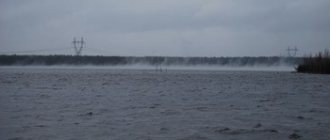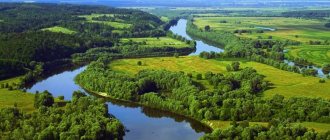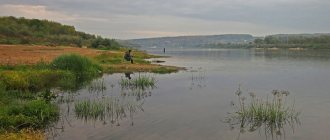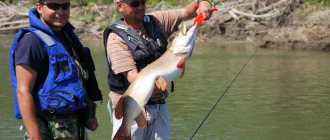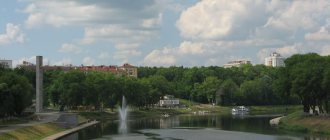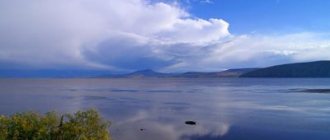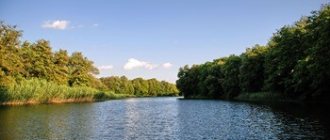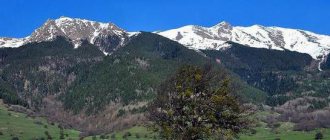If you carefully study the map, the Oka River belongs to the right tributary of the Volga River. It begins with a source located in the Oryol region of Russia. The river is characterized by a very winding topography, sometimes similar to peculiar loops. As you know, the Volga flows into the Caspian Sea. Therefore, the Oka River, like the Volga, is included in the basin of this sea.

The size of the river is 1,798 thousand meters and it covers an area of 245 thousand km2. Sometimes its width is at least 2.5 km.
The name of the river comes from the Finnish-Ugric dialect. "Iokki" translated means nothing more than "river". Some experts argue that “Oka” is translated from Latin in a similar way.
Map of the depths of the Oka River
Starting from the Oryol region, r. The Oka still flows through some regions of the southwestern part of Russia. And directly:
- It originates in the Oryol region.
- Then it flows through the Kaluga region.
- Then through the Moscow region.
- Enters the Ryazan region.
- Will not bypass the Vladimir region.
- It ends in the Nizhny Novgorod region.
The Oka is a significant transport source, especially for the western regions of Russia. Thus, the Oka River connects significant industrial, administrative, cultural and economic cities of Russia. It connects the following cities by waterway: Nizhny Novgorod, Orel, Kaluga, Murom and other equally important cities.
Oka river
Holy Trinity Belopesotsky Monastery
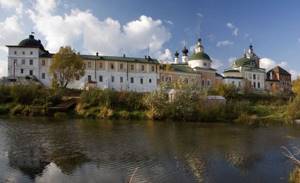
Address: Moscow region, Stupino, Belopesotskaya street
The oldest monastery of Kashira arose on the left bank of the Oka at the end of the 15th century. Initially, there were only wooden buildings on the territory, but already in the 16th century the monastery was a fortified fortress-outpost of the city. During the time of Ivan the Terrible, a monumental ensemble of stone buildings appeared here, characteristic of an ordinary desert.

Over the centuries, the monastery was constantly updated: at the end of the 17th century, new stone walls with towers appeared here, and in the first half of the 19th century, the Sergievskaya and Ivanovo churches were erected. However, the layout of the composition has hardly changed over the years of its existence. Now the monastery has been almost completely restored after the Soviet years and is a functioning convent.
Flow

The river originates. Oka in the village of Aleksandrovka, Oryol region. It was put on maps back in the 80s of the 19th century. Starting from the spring, the river laid its course through the Central Russian Upland. At the initial path of the river there is a valley with deep slopes, which indicates a deeply indented topography. It begins its journey, heading north and along its path it merges with many channels. The Orlik River, flowing through the city of Orel, is considered the first tributary of the Oka River. They collide just in the city of Orel. The Upa River, which flows through the Tula region, is the second tributary of the Oka River. They merge together in the Tula region. In Kaluga, the Oka River connects with its third tributary, the Ugra River. After the confluence of these two rivers, the Oka River changes its course from north to east. After changing the direction of the channel, the river continues to flow through the Tula and Kaluga regions, meeting on its way such cities as Aleksin and Tarusa. Subsequently, the river is again redirected from east to north. Such changes in the direction of the river bed happen more than once, and after the river leaves the city of Aleksin, not far from the city of Protvino, the river will once again change its route from north to east.
Within the Moscow and Tula regions, the river is considered an element that conventionally separates these two regions. A similar border is observed within the cities of Serpukhov and Stupino. The next, fourth tributary of it is the river. Moscow. These two rivers merge within the city of Kolomna, Moscow region. After this, the Oka River sharply changes its route from the east to the south. Within the lands of the Ryazan region, the Oka River is characterized by a rather winding route due to the highly hilly terrain. The Pronya River is considered the fifth tributary of this river. Having met the Pair River on its way, it is again redirected to the north. Carrying out a certain bend near the city of Kasimov, it returns to its original direction.
In the Ermishinsky district of the Ryazan region it meets its seventh tributary, the Mosha. After that, it flows along the border of the Nizhny Novgorod and Vladimir regions. The Klyazma River is considered the eighth and last tributary of the Oka River. They come together in the city of Pavlovo, Nizhny Novgorod region. On her way she meets the following cities: Murom, Pavlovo, Dzerzhinsk.
After this, in Nizhny Novgorod, the Oka River flows into the Volga River. This is where its mouth is located.
A few facts about Kashira
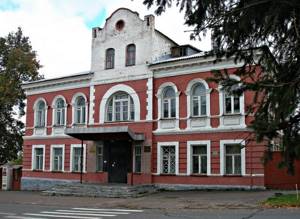
Former City Council building
- Kashira is located on the right bank of the Oka River; the first settlement of Koshira arose on the left bank in 1356. In 1620 the city was moved to the right bank.
- What the name of the city means is not known for certain; perhaps it came from the name of the Kashirka river, which flowed into the Oka.
- In 1900, the Paveletskaya Railway was built through the city. Now there are three railway stations in Kashira: Kashira, Tesna and Ozherelye.
- In 1922, on Lenin’s initiative, the Kashirskaya State District Power Plant was built according to the GOELRO plan. For the builders and workers of the state district power station, the village of Ternovsk was built, which became an independent city, changing several names in 1963, the city of Novokashirsk became part of Kashira as the Kashira-2 microdistrict.
- In the center of the city is the Kashira detention center No. 5. The prison in Kashira was opened by decree of Peter I in 1723 and is still operating. Next to the pre-trial detention center there is an old water tower from the early 20th century.
- The population of Kashira is about 47.3 thousand people.
- In 2015, the city of Ozherelye became part of Kashira and became its microdistrict.
- The distance from Kashira to Moscow is 120 km, to Serpukhov - 76 km, to Kolomna - 72 km, to the city of Zaraysk - 60 km.
Water register data

In the water register of the Russian Federation, the Oka River is assigned the code 09010100112110000017555. Due to hydrological knowledge, it is assigned the number 110001755,
The Federal Agency for Water Resources assigned similar numbers based on information received from the geographic information system for water management zoning throughout the Russian Federation.
In addition, the Oka River has other codes, such as:
- 01.01.001 – code corresponding to the basin of this river.
- 10 – according to the volume number on GI.
- 0 – release according to GI.
Based on data received from the State Water Register of the Russian Federation:
- The river belongs to the Oka basin district.
- The area of the river from the source to the city of Orel corresponds to the status of national economic importance.
- The river sub-basin of a river is considered to be the basins of the river's tributaries up to its confluence with the Moksha River.
- The river basin is represented by the Oka River.
Water resources of the river basin Eyes are used in shipping.
The following authorities regulate this process:
- The Volzhskoye State Budgetary Institution is a segment from the mouth of the Oka River to the Seima River canal.
- FSUE “Canal named after. Moscow" - the section from the Seima River to the city of Kaluga.
Tributaries

The Oka River serves as part of the most important transport connection for various cities of the Russian Federation. It is considered one of the main water transport routes of the state. It seems to connect many towns, cities and villages into one whole. Throughout almost the entire route, a considerable number of both large and small rivers, as well as small rivulets, flow into the Oka River. This number reaches 100, or even more. The key large and medium-sized rivers, which are tributaries (the basin area reaches 50 thousand km2), are considered:
Left tributaries (from the mouth to the Oka River):
- R. Klyazma - 87.0 thousand sq. m.;
- R. Seimas - 58.0 thousand square meters;
- R. Chucha - 145.0 thousand square meters;
- R. Visha - 152.0 thousand sq.m.;
- R. Mothra - 186.0 thousand sq.m.;
- R. Ushna - 191.0 thousand sq.m.;
- R. Vershinskaya - 227.0 thousand sq. m.;
- R. Salka - 261.0 thousand sq.m.;
- R. Unzha - 322.0 thousand sq.m.;
- R. Goose - 426.0 thousand sq.m.;
- R. Pra - 479.0 thousand sq.m.;
- R. Moscow - 855.0 thousand sq. m.;
- R. Kremichenka - 925.0 thousand sq.m.;
- R. Nara - 979.0 thousand sq. m.;
- R. Protva - 990.0 thousand sq.m.;
- R. Tarusa - 1006.0 thousand square meters;
- R. Dryasha - 1025.0 thousand sq.m.;
- R. Ugra - 1122.0 thousand square meters;
- R. Zhizdra - 1164.0 thousand square meters;
- R. Tsvetyn – 1370.0 thousand sq.m.
Feeder on the Oka River 08/3/2014 (Sabaneev Foton 390-130) Chub, Sterlet…
Right tributaries (from the mouth to the Oka River):
- R. Kishma - 103.0 thousand square meters;
- R. Helmet - 108.0 thousand sq.m.;
- R. Kuzoma - 123.0 thousand sq. m.;
- R. Tesha - 204.0 thousand sq. m.;
- R. Veletma - 206.0 thousand sq.m.;
- R. Zheleznitsa - 251.0 thousand sq. m;
- R. Maulinka - 293.0 thousand sq. m.;
- R. Pra - 556.0 thousand sq.m.;
- R. Pronya - 615.0 thousand sq.m.;
- R. Raka - 658.0 thousand square meters;
- R. Besputa - 940.0 thousand square meters;
- R. Ochka - 1494.0 thousand sq.m.;
- R. Ore - 1475.0 thousand sq.m.;
- R. Knubr - 1411.0 thousand square meters;
- R. Zusha - 1303.0 thousand square meters;
- R. Vypreyka - 101.0 thousand sq.m.;
- R. Gilt - 1043.0 thousand sq.m.;
- R. Pytal - 1050.0 thousand sq.m.;
- R. UPA - 1302.0 thousand sq.m.;
- R. Svoboda - 1178.0 thousand sq.m.;
- R. Muzhach - 1142.0 thousand sq. m.
Bridges

More than thirty bridges were built across the Oka River at different times. These include railway, automobile and pontoon crossings, not counting other, less important crossings across the Oka River.
The most important bridges are:
- Kanavinsky, which is located in Nizhny Novgorod. This bridge reaches 795 m in length and 23 m in width. It was erected in the 30s of the last century.
- Nizhny Novgorod metro bridge, located in Nizhny Novgorod and has 1 km 230 m in length, width - 18 m and this bridge was built in 2012.
- Molitovsky Bridge is also located in Nizhny Novgorod. It is 951 m long and 21 m wide. This bridge was built in the 90s of the last century.
- Myzinsky also has a residence permit in Nizhny Novgorod. It is 1 km long and 27 m wide, commissioned in the 80s of the last century. It is an important junction on Route No. 7.
- Sartakovsky Bridge has a railway purpose and began its work in the 60s of the 20th century.
- The Pavlovsky pontoon bridge has been functioning in the same way since the 60s of the 20th century and is 323 meters long and 7 meters wide.
- Kashira railway bridge. It was put into operation in the 30s of the last century and is 580 meters long.
- The Red Bridge has been in operation since the 50s of the 20th century and is located in the city of Orel.
- The Striginsky Bridge has been in operation since 1993. It is 950 m long and is an important element of route No. 7.
- Muromsky Bridge was inaugurated in 2009. It is 1 km 393 m long and 15 m wide.
R. Oka. Feeder. A few days of Indian summer fishing...
Live in Kashira: stay awake for days on the Oka River and watch the “silver clouds”
Kashira is a small town in the distant Moscow region, not as famous as, for example, neighboring Kolomna and Zaraysk. But here, on the banks of the Oka, lovers of nature, history and wooden houses of the early 19th century come. Ilya Bilin, a 16-year-old resident of Kashira and a 9th grade graduate, told RIAMO about how young people live in the city and why they don’t want to leave.
Live in Zaraysk: be proud of history and earn money from your hobby >>
Constructivism and graffiti

Vladimir Lebedev
Kashira is an ancient Russian city on the banks of the Oka, known since the 14th century. I live in the Kashira-2 microdistrict, or Novaya Kashira, and it used to be called Novokashirsk. From 1932 to 1963, it was an independent city, and initially a village at the Kashirskaya State District Power Plant, one of the first power plants built according to the GOELRO plan (plan for the electrification of the USSR after the 1917 revolution - ed.). Therefore, in Kashira-2, many buildings in the spirit of constructivism have been preserved.

Vladimir Lebedev

Vladimir Lebedev
1 of 2
Another feature of our neighborhood is the huge patriotic graffiti on houses that appeared recently. For example, a huge one, covering the entire end of the Motherland house, on a blue background. There is also a huge portrait of Vladimir Putin, which was painted by local artists for the president’s anniversary last year on one of the five-story buildings.
A post shared by Kashira (@kashira.ru) on Oct 10, 2017 at 7:24am PDT
In general, my area is well-groomed and landscaped, there are shops and places for recreation, sports complexes. Nearby there is a school and kindergartens.
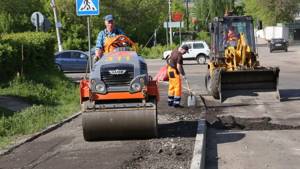
Vladimir Lebedev
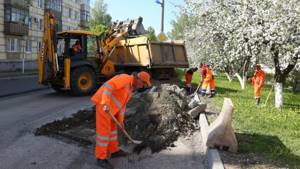
Vladimir Lebedev
1 of 2
If previously Kashira was not the cleanest city, now it is becoming a leader as the most comfortable city in the Moscow region. For example, since April, a vote was held on the portal “Tourist Guide to the Moscow Region”, according to the results of which Kashira overtook everyone. The reconstructed Sovetskaya Street with a pedestrian zone and a monument to the symbol of the city - the archer - was presented at the vote. During the Tatar-Mongol yoke, the Streltsy repelled the raids of the Tatars and guarded the Moscow principality from the south. The voting was intended to attract the attention of tourists to the most interesting cities of the Moscow region.
Living in Nakhabino: leaving the house into the forest and being proud of the defense industry >>
Noctilucent Cloud Festival
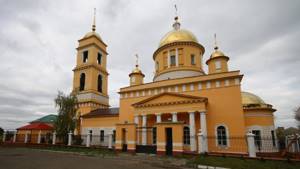
© Podmoskovye Publishing House, Sergey Gordeev
Kashira is an ancient city with a rich history and very beautiful. Historical monuments are mainly located in the historical part of the city - in the Kashira-1 microdistrict.
In old Kashira, residential buildings of one-story and two-story mansions of the 19th century in the classicist style and wooden houses of the late 19th and early 20th centuries have been preserved. The ancient Russian city layout has also been preserved. Most tourists come here precisely for this – to feel the comfort of a provincial merchant town.
A post shared by Kashira (@kashira.ru) on Jul 29, 2017 at 8:27am PDT
Kashira is also very rich in temples and cathedrals. These are the Church of Florus and Lavra, the Assumption Cathedral, the Vvedensky Church, the Church of the Ascension of the Lord and others. The bell tower rises above the historical center.
The main street of the center - Sovetskaya - abuts a small round area before descending to the Oka River, it is called a “saucer”. From there, everyone goes down to the river along a ladder, stopping and contemplating the views.
Kashira museums can tell you a lot of interesting things. For example, in the Kashira Museum of Local Lore in the center, in addition to the main exhibition about the history of our region, there is also a “museum within a museum” dedicated to noctilucent clouds.
This is a special natural phenomenon that was studied by priest-astrophysicist Nikolai Ivanovich Grishin in the last century. He was a very extraordinary person who, towards the end of his life, ended up in Kashira. He served in the Kashira Assumption Cathedral and at the same time was engaged in science, setting up an observatory in the bell tower.
Every year at the end of June, the Night of Silver Clouds festival is held in Kashira, dedicated to this man and this phenomenon. Scientists, musicians and even astronauts come to us.
Live in Balashikha - walk in Gorenki and return from Moscow by taxi >>
Miracles on the Oka
A post shared by Kashira (@kashira.ru) on Nov 17, 2017 at 4:13am PST
My favorite places are the banks of the Oka. All the places on the Oka River are cool, especially in the summer, when everything is green and fragrant. The river has its own energy, where you immediately gain strength.
I often spend time on the Oka River. We gather with friends, take tents and stand on the river bank for 3-4 days. Amazing stories also happened.

© Dmitrov Information Agency, Vyacheslav Ryabkov
A few years ago, at the beginning of July, my friends and I went to the river. Although it was late, oddly enough, no one wanted to sleep. By 2 o'clock in the morning we set up camp, chopped wood and were about to go to bed, but suddenly we saw some kind of glow from the river - a silver glow from the moon or something else that spread over the entire surface. It’s hard to explain – some kind of indescribable beauty and energy. As a result, we didn’t sleep for two days – we simply didn’t want to sleep.
All residents of Kashira love to sit by the river, many relax on the beach. By the way, the city beach was improved several years ago. They brought good sand there, installed wooden sun loungers, changing cabins and toilets. But I don’t go there, so I don’t know how it is this season. There are a lot of wild places on the Oka where you can swim.
Living in Lobnya - acting in films and counting planes overhead >>
Without a cinema, but with a planetarium

Vladimir Lebedev

Vladimir Lebedev
1 of 2
In Kashira you can get a good education without leaving the city. There are very good schools, for example, schools 7 and 8, which last year were in the top 100 schools in the Moscow region, and, of course, my school is number 2. After finishing school, I would like to go into medicine. There are branches of several universities in Kashira, but this is not my profile. There is time to think - I still have two years to study.
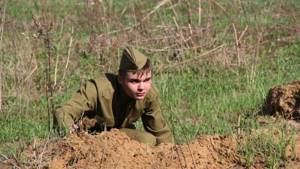
personal archive

personal archive
1 of 2
I am very passionate about the history of Russia and the CIS, I like to take part in patriotic events. I would like to learn more about the history of the country and teach the younger ones. The patriotic trend is actively developing in our school, and I am actively involved in this. If I’m invited to take part in some city event, and there are a lot of them, then I always go, I just can’t refuse.
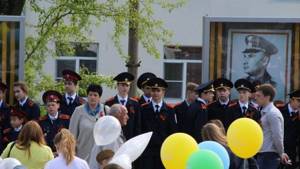
personal archive
For example, my friend and I conducted excursions in our school military-historical museum “Kashira - a front-line city,” distributed St. George ribbons and participated in the parade of Kashira cadets on May 9.

Vladimir Lebedev
I also like motocross and music; I play various musical instruments and often go to libraries, of which there are several in the city. In general, I can satisfy all my interests in the city. Of course, the city is missing something – for example, a cinema. But we have our own planetarium.
Medicine in Kashira is also generally not bad; medical institutions are gradually being modernized. Clinics are open, there are first aid stations and outpatient clinics in rural areas. Emergency medical facilities in Kashira-1 were transferred to Ozherelye. The only bad thing is that there is no maternity hospital in the city; our “Teletubbies” have to give birth in neighboring Stupino.
Living in Kolomna means going to museums and not going to Moscow>>
Kashira "abandoned"
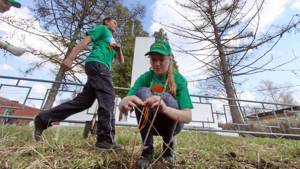
Vladimir Lebedev

Vladimir Lebedev
1 of 2
What is upsetting is the abandoned buildings, of which there are quite a lot in Kashira. There is even an abandoned morgue in Kashira-3, I haven’t been there and I don’t recommend it to others. Although there are many stories on the Internet about how people climb there to experience the thrill, I have not been there and do not recommend it to others.
In the vicinity of Kashira there are several abandoned estates that are in deplorable condition. Every year they become overgrown with garbage left behind by tourists.
One of them is the Zendikovo estate, once a luxurious architectural ensemble of the late 18th century. It belonged to a person from the Baryatinsky princely family, then to professor-naturalist Ivan Dvigubsky, and then to landowner Gorokhov. Now the estate is almost completely destroyed, it is barely visible in the middle of an overgrown wild park. And once there were cascading ponds and an orchard here.
Recently, a cleanup was held in this area and it was cleared of garbage. Another estate not far from us, Aleshkovo, is in a similar condition. I am glad that some estates are still being restored, for example, Taraskovo.
Living in Bronnitsy: waiting for Messi, playing football and being proud of your jewelry >>
Wait for the industrial park and not go to Moscow
A post shared by Kashira (@kashira.ru) on Sep 16, 2017 at 8:19am PDT
While I'm at school and don't think about moving. I love Kashira, it's a quiet and peaceful place. I love fresh air and nature. People I understand live here.
I like how the city is developing, that new shops and cafes are appearing. There are about seven cafes and restaurants in the center alone. There are shopping and entertainment centers and other places for recreation.
Moscow is about 100 km from us, which is about 2 hours. Many people take the train to Paveletsky Station, the journey takes about 1 hour 40 minutes. But I don’t go to Moscow often, so I can’t yet evaluate the pros and cons of public transport.
Public transport in Kashira is good. The city has three main bus routes, and many commuter routes. Bus number 381 goes to Moscow, to the Krasnogvardeyskaya metro station.
Of course, it makes sense to go to Moscow for entertainment and sights. Although in Kashira and its environs a rather rich cultural life is now in full swing.

Alexander Shchemlyaev
In principle, work can be found in Kashira. For example, in 2021, the Kashira industrial park is due to open here, where almost 2 thousand jobs will appear. There is also a large mushroom growing company and a large agricultural complex, Agrokultura Group, operating in the city district.
Live in Kotelniki: eat fresh salads from Belaya Dacha and ride the metro >>
Flora and fauna of the Oka River
The basin of this river covers a vast area and it flows through several areas, which is believed to be the reason for the presence of all kinds of animals and plants. In addition to various settlements, the river bed passes through broad-leaved plantations, namely through Eastern European forests, where pedunculate oaks are considered the main representatives. In addition to deciduous forests, you can also find coniferous forests, with the presence of spruce and pine trees.
The following interesting plants grow within the Oka River:
- brilliant pondweed;
- narrow-leaved pondweed;
- curly pondweed;
- teloresis;
- hornwort;
- yellow egg capsule;
- watercolor;
- duckweed;
- reed;
- water manna;
- common arrowhead.
It is quite natural that this is not a complete list and in the Oka River you can find a number of other, no less common plants.
Kashirskaya GRES
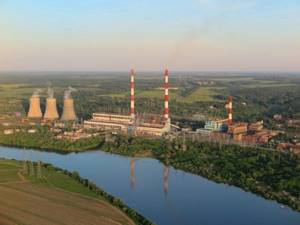
Address: Kashira, Kashira-2 microdistrict, st. Sovetsky Prospekt, 2.
The power plant in Kashira was built in 1922 on the banks of the Oka River under the personal leadership of Vladimir Lenin. In those years, it ranked second in Europe in size and power. It was regularly modernized, thanks to which production constantly showed good performance, and workers were awarded government awards. Over the years, many outstanding scientists and scientists worked at the station, including heat engineering specialist and professor V.A. Kirillin.
Today, Kashirskaya GRES continues to operate and is the largest industrial enterprise in the region, which uses natural gas and coal as fuel. At least 1.5 thousand people are involved in labor activities.

